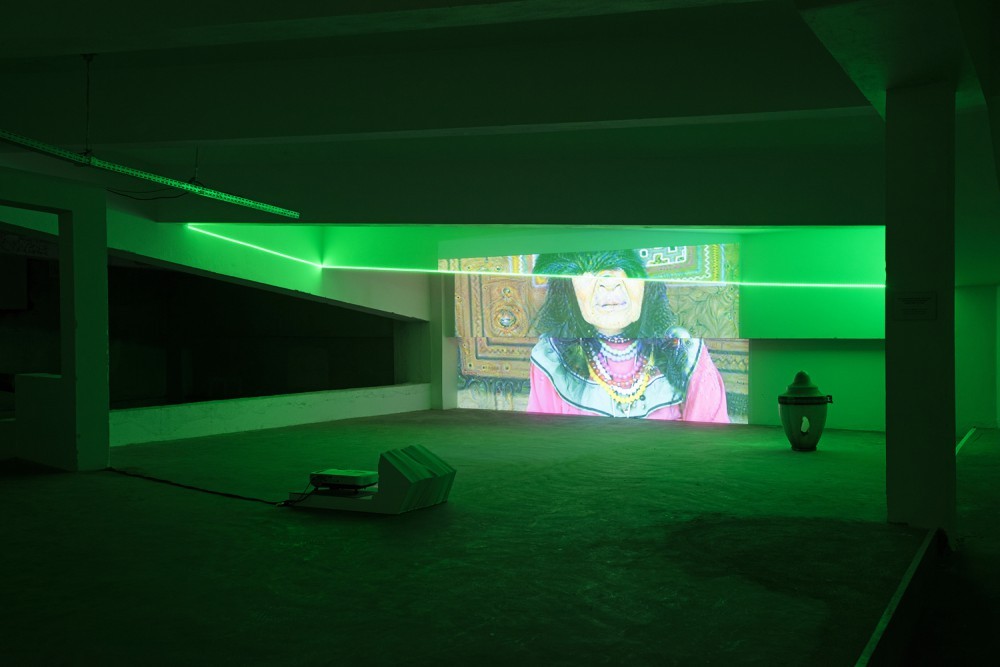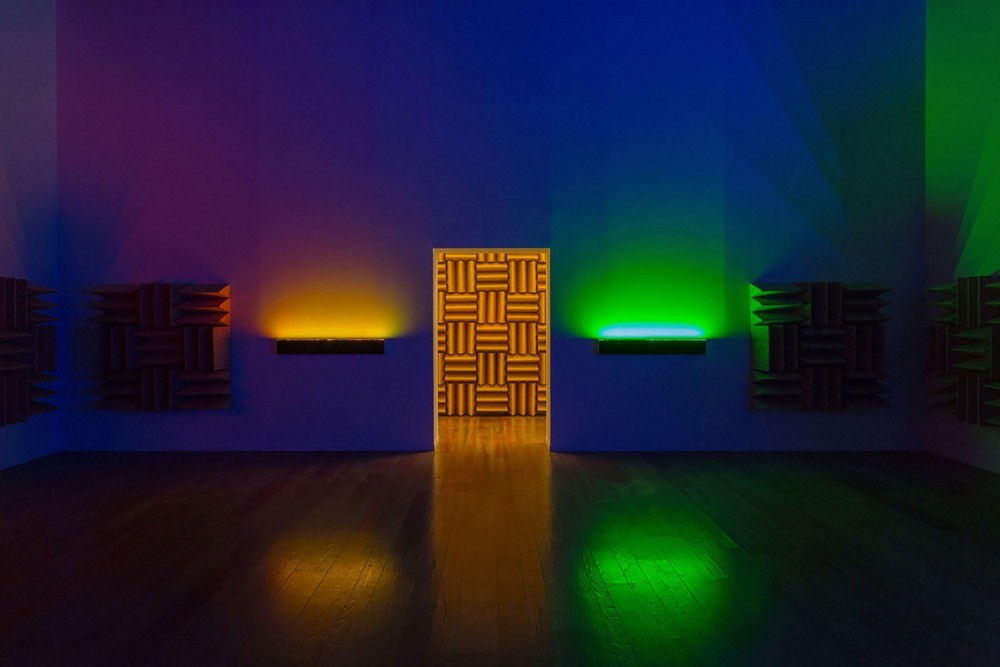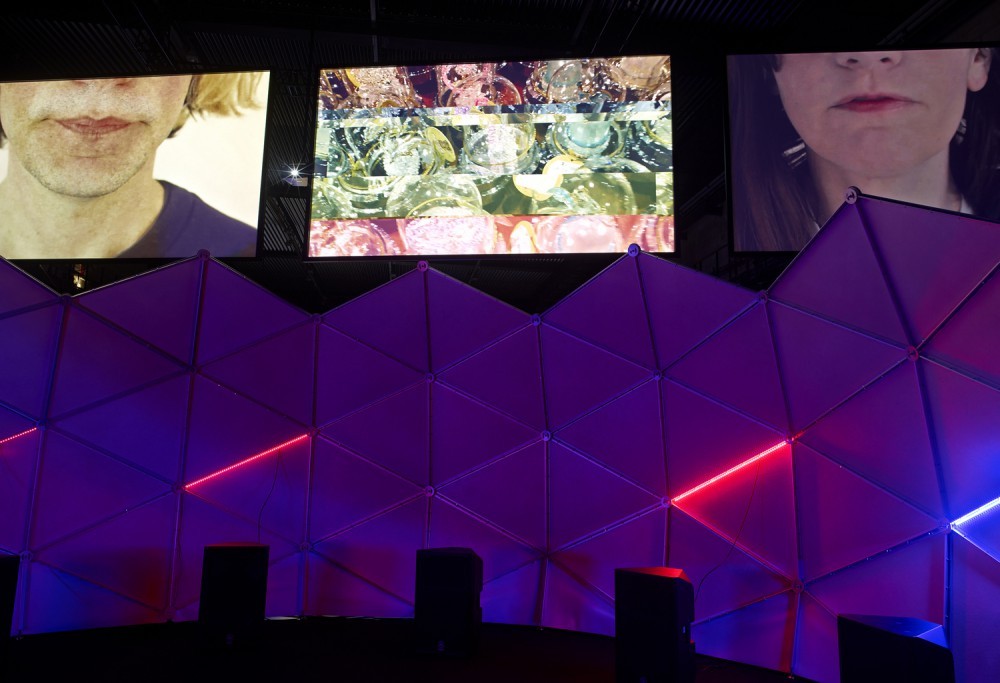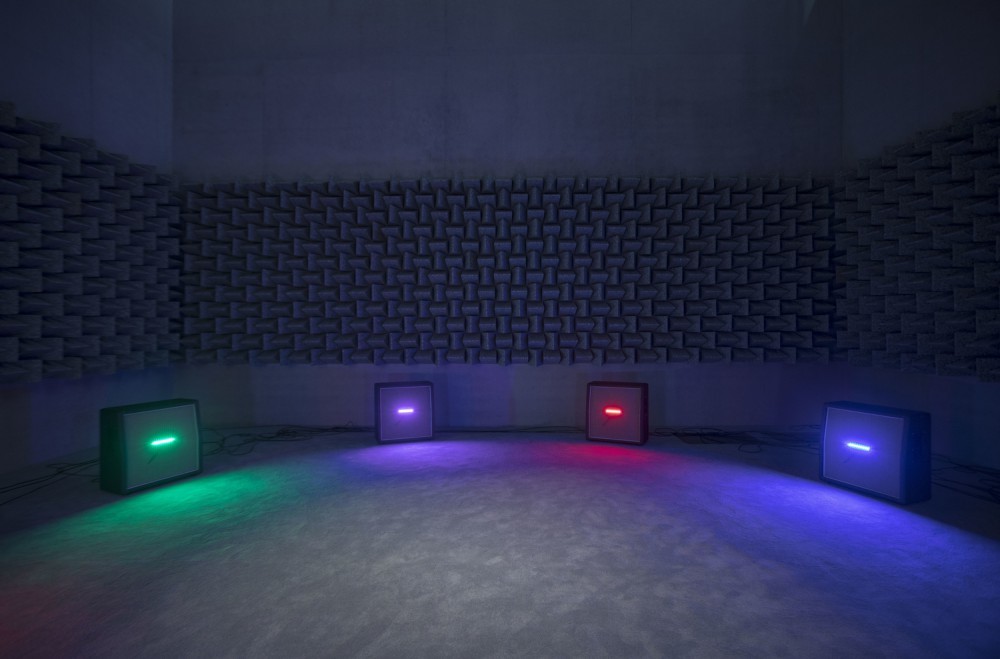SPACE HIGH: THE SUPERSENSORY SOUND ART OF HAROON MIRZA
What’s the difference between drinking Ayahuasca in the Amazon rainforest and taking ecstasy in Fabric while dancing to drum and bass? Not much, according to the British multimedia artist Haroon Mirza, who, during his art school days at the University of Winchester, was as likely to be found in the institution’s anechoic chambers as he was hanging around in nightclubs. Situated between the senses and exploring the imaginative possibilities of their selective absence, Mirza’s practice combines sculptural installation and audio compositions inside alter-reality of the black box. Weaving together in the dark, these disparate elements maintain a peculiar relationship that is some times harmonious and clashing at others, yet always vibrate with a sort of mysticism. HRM199: For A Partnership Society, Mirza’s recent solo exhibition at the Zabludowicz Collection in London, saw Mirza delving deeper into this hallucinogenic space of non-linear temporalities and uncertain origins. PIN–UP paid Mirza a visit at his new studio in East London to discuss astrotheology and mysticism, nightclub aesthetics, and the architecture of darkness, homegrown DMT, and psychedelic cacti, alongside his upcoming commission in Marfa, Texas.
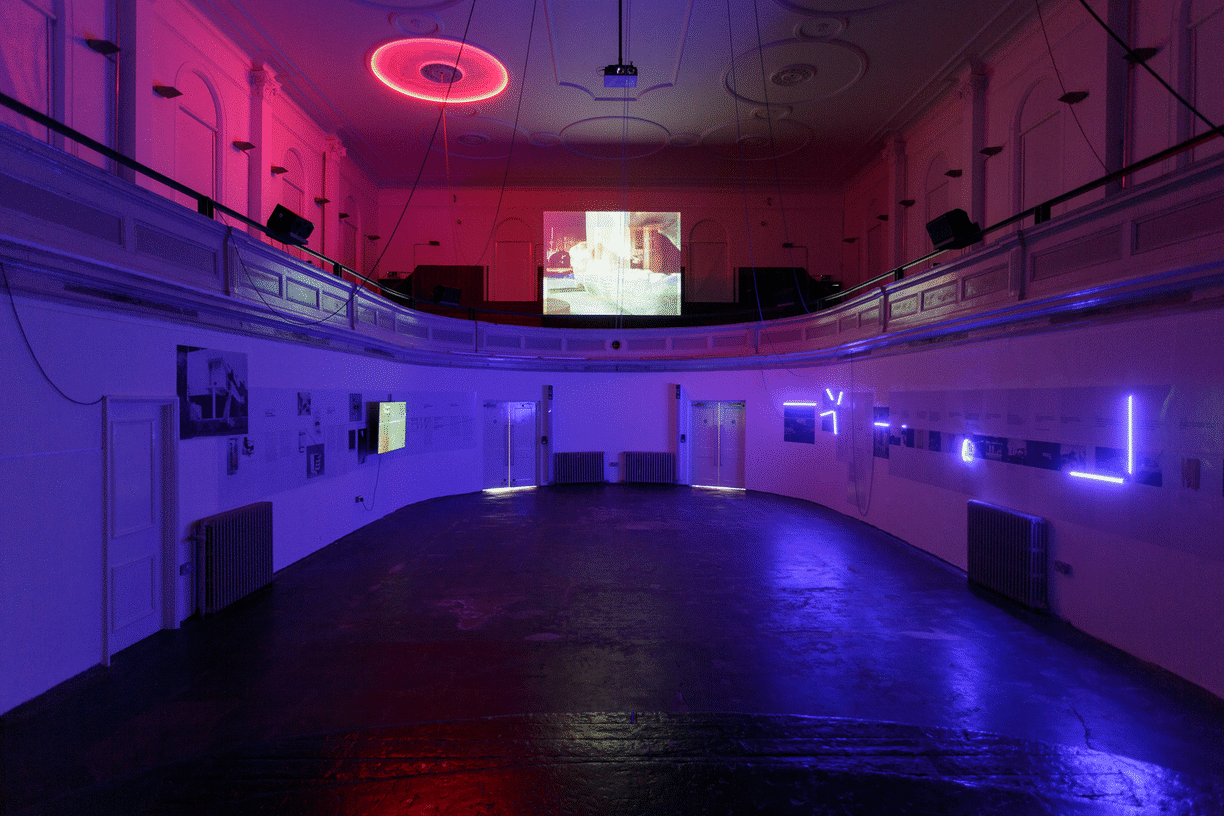
Installation view of *HRM199: FOR A PARTNERSHIP SOCIETY*, at Zabludowicz Collection, 28 September - 17 December 2017. © Haroon Mirza; Courtesy the artist and Zabludowicz Collection. Photography: Tim Bowditch
Walking into one of your installations feels like walking into a nightclub. What gives?
There’s absolutely a nightclub experience there. I make work like that because I spent a lot of time in nightclubs. But beyond what it feels like, a nightclub performs an extremely important social ritual. In fact, there’s no real difference between drinking Ayahuasca in an Amazonian rainforest and listening to people play drums and tambourines around a fire than there is to go to Fabric and take ecstasy and dance to drum and base… or hang out in an anechoic chamber for 10 hours, if you’re into that. It all plays the same function, which is about transcending everyday reality to engage with other, higher forms of existence.
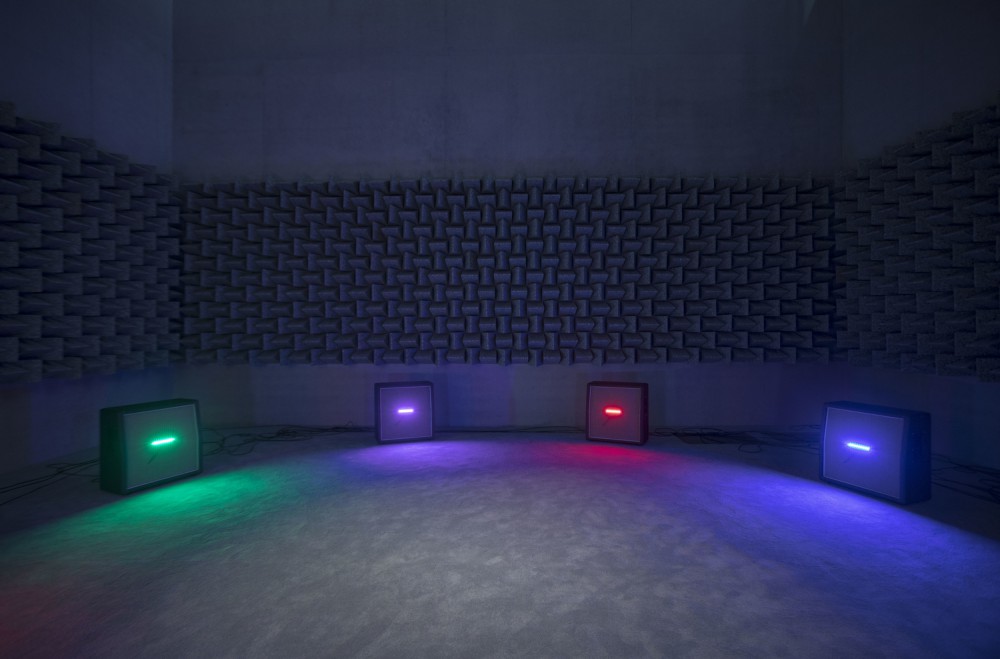
Installation view of 'hrm199: Haroon Mirza & Francesca Fornasari, feat. Nik Void, & Tim Burgess /\/\/\ /\/\/\', Production LiFE - Ville de Saint-Nazaire, off-site programme by Le Grand Café - contemporary art centre, Saint-Nazaire, France, 2017. © Haroon Mirza; Courtesy Le Grand Café. Photography: Marc Domage.
Architecture seems to have a troubled relationship with darkness: from the radical groups of the 1960s like Superstudio who thought discos should be a home for everything, to the artificially light-flooded renderings of today’s architectural culture. What do you think of darkness, how do you use it?
Sadly it’s not just architects. The hunger for more information and control is not a symptom of architecture, but a symptom of technology. What’s the ultimate goal of this new software? To simulate reality, to offer a sort of endgame that gets as close as possible to being full experience of reality, but it’s not actually, so it’s safe. A zero risk scenario. Darkness helps undo this obsession with power and perception and allows for an alternative understanding of reality. In my current show at the Zabludowicz, the top room is pitch black, but you can always hear yourself, whether brain or body. Your brain starts to create images, populate with remnants of what you saw before you entered the room.
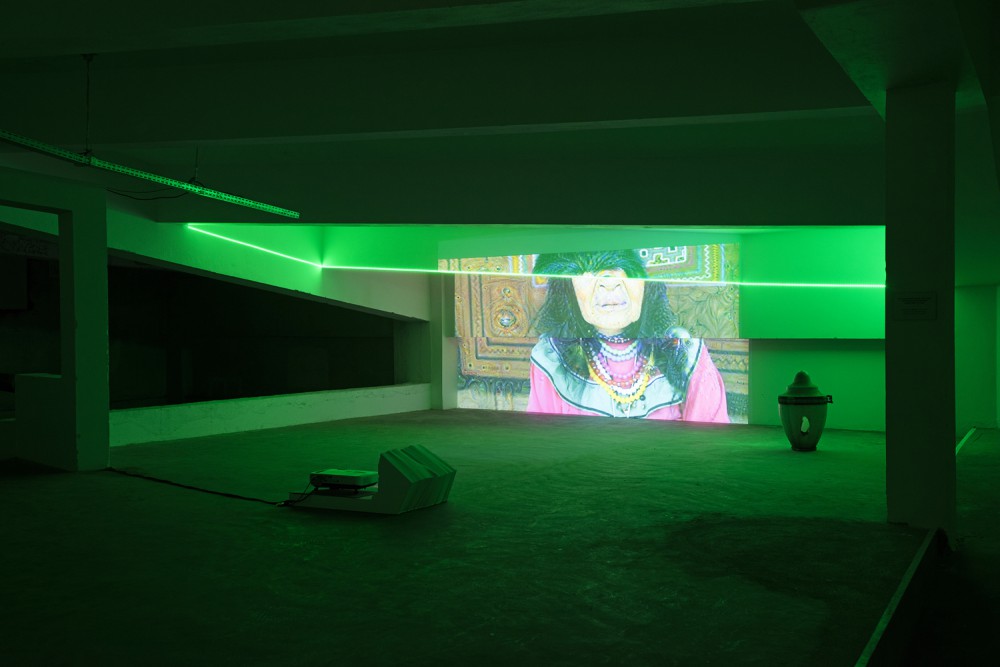
Haroon Mirza, ããã, 2016, mixed media including Emerging Paradigm (2015), 4 channels of video and 8 channels of electrical signals, dimensions variable. Installation view at PIVÔ, São Paulo, Brazil, 2016 © Haroon Mirza ; Courtesy PIVÔ, São Paulo.
This attempt to situate the viewer in an alternative reality seems increasingly popular in contemporary art?
It’s not dissimilar to counter-culture movement of the 1960s, because politically things are really fucked up now and people need to have some freedom. Contemporary art always moves beyond the status quo. Take for instance, the push for minimalism in the 60s that created the white cube, which is essentially the result of us chasing irreducible space, and the mirror we encountered when we got there. Then there was the emergence of the black box, which is associated with film and its interconnected properties of light, image, and sound. With moveable walls, adjustable lighting, and sound insulation, the black box offers a total autonomy to the work. But even that convention is being broken. Now we're in the era of big data, unconscious streaming, and a multiplex of information, which art must now respond to. So to combat that noise, art today flourishes in all kinds of unusual and unexpected architectural spaces, and floats more fluidly between space and time.
Who — or what — are your influences?
Geometry. Of course there’s the minimalists and the light artists; I’m a big fan of Dan Flavin and Donald Judd. But there’s also sacred geometry: mystical experiences, legends of shamanism; where scientific endeavour and mystical experience meet and become one thing. The way we perceive space and sound as two separate things when really they are the same experience, and how language creates that imaginary separation.
The limits of knowledge and its paradox: the more you know, the more you learn that you don’t know. This of course fascinates everyone, especially the empirical scientists. With science there’s answers at every stage, until the end.
Alternative truths. Take for instance astrotheologists, who essentially believe there’s an astrological basis for religion. My interest in deconstructing the boundaries between religion, mystical experience, hard science and human history influence my work as much as any aesthetic sensibility or art historical tradition.
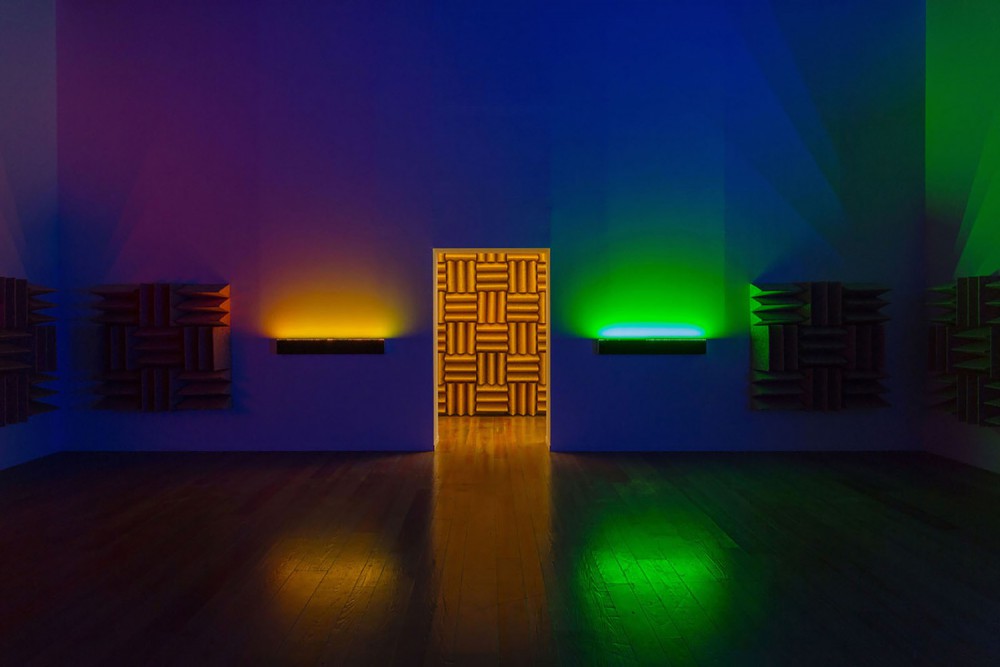
Haroon Mirza, A Chamber for Horwitz; Sonakinatography Transcriptions in Surround Sound, 2015, custom audio visual device, LEDs, speakers, foam, dimensions variable. Installation view of Haroon Mirza/hrm199 Ltd. Ausstellung in Museum Tinguely 2015 © Haroon Mirza; Courtesy Lisson Gallery. Photography: Bettina Matthiessen.
Can you share a bit about your upcoming project in the desert in Marfa?
It’s a monolithic stone circle strapped with solar panels in the middle of the desert in theoretically infinite space. It collects solar energy throughout the 28-day lunar cycle and on the full moon, it disperses all of its collected power in the form of a song. It’s therefore a fusion of contemporary technology, a 50,000-year human history of sticking rocks in the desert, and ideally, a testament to its own mysterious origin... but that’s the hardest part. I tried my best to have it not be an art project; to just have it appear overnight. But the logistics, the funding, the permission all dictated it needed to be an art project.
Why is the location is so important?
That particular stretch of desert is indigenous to the psychedelic cactus paeote, which indigenous communities would consume to get high and have these mystical encounters in the desert. The plant played a huge role in the local culture heritage over the past 2,000 years, but peyote itself is migrating south into the Chihuahuan Desert in Mexico because of climate change. Meanwhile, the stones I use are brought up from Mexico. Marfa rock is limestone that is coral aggregate, so a reddish-yellow; these rocks are dark grey with streaks of white veins. So in the landscape, the circle looks totally alien: its otherworldliness is crucial to the project.
Text by Alice Bucknell.

